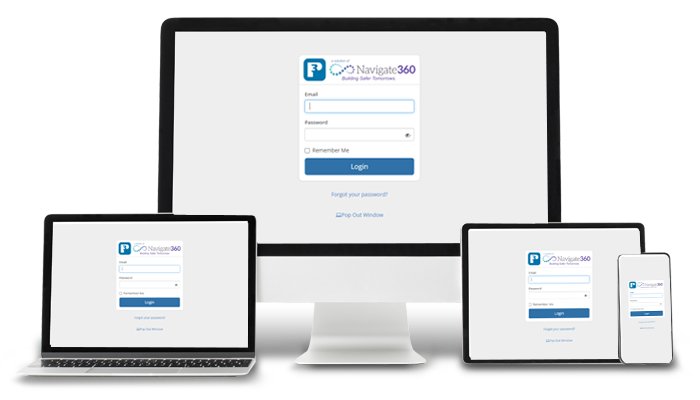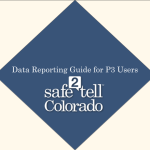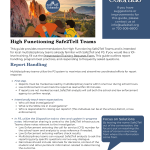Safe2Tell sends each report to local schools and law enforcement, maintaining the anonymity of the reporting party, who is protected by Colorado state law (C.R.S. Section 24-31-601 et seq.). The suggestions on this page guide report recipients in successfully responding to and closing out Safe2Tell reports.

What are best practices?
Although content and circumstances vary for each report, the goal is prevention and awareness through education and training. It is not necessary to inform parties that the information was obtained through a Safe2Tell report. Safe2Tell recommends not leading conversations with Safe2Tell as the source of information as that can move the conversation away from resolving the concern and instead toward wanting to resolve the concern. Sharing report contents (including forwarding or copying information in the report) is not permitted (C.R.S. Section 24-31-607) in order to maintain anonymity of the reporting party. If you need to assign someone else to handle the report who did not receive the report initially, please contact 1-877-542-7233 and request the re-assignment.
Remember that information from Safe2Tell reports cannot be copied outside of the Safe2Tell report management software (C.R.S. Section 24-31-607). However, the report ID number can be used.
Change contact information
If you are a Safe2Tell report recipient and you need to change your information or the information of someone else, complete a recipient updates form.
P3 System
Responders or staff with a P3 login: To access, view, and update reports in the P3 System, login with the email address assigned to you. For more information refer to the P3 user guide below.
Responders or staff without a P3 Login: You will need the report ID number and disposition number when using the P3 Online Disposition Form. For technical assistance, please call 1-877-542-7233.
This guide will walk users through the features of P3 and the associated Safe2Tell policies.
P3 FAQs:
Please call Safe2Tell immediately at 1-877-542-7233, provide the report number, and destroy the report/delete the email or text message.
Safe2Tell has the ability to request more information from the reporting party via our web reporting and mobile app system. Inform Safe2Tell through comments on the disposition tab with your request for more information. If there is not enough information for follow-up, note as such in the disposition/in-progress report. If more information becomes available, P3 will be updated.
You should only indicate you received an anonymous report but should not specify that it came from Safe2Tell. It is not necessary to articulate that a Safe2Tell report has been received.
While Safe2Tell reserves the right to use anonymized report content to describe incidents and outcomes for program purposes, the identity of particular schools and/or districts will not be disclosed.
Safe2Tell compiles data for the state of Colorado as a whole. Information posted to the Safe2Tell website, including monthly and yearly data reports, are public domain. Safe2Tell only releases district and school data to authorized school/district personnel. All P3 users have the authority to access data for all of their schools. If you require assistance on this, please email us at info@safe2tell.org.
Yes, you may update the report regardless of another organization’s involvement so that Safe2Tell has a complete record of the report outcome. Multiple dispositions may be submitted on each report.
A closed report informs Safe2Tell that you have received the report, have completed an initial investigation, and have a plan for moving forward. Adding additional information in the disposition/in progress notes tab will help document your response and inform all parties.
Anonymity laws protect the individual who made the report. Individuals listed in the report who need intervention may be contacted, interviewed, investigated, etc. as determined by the designated school representative, law enforcement officer, or involved community agency.

Who should receive reports at the school level?
Safe2Tell relays information from the reporting party to school multidisciplinary teams. Each school determines what the practice or procedure will be for routinely handling Safe2Tell reports. Below are examples of individuals principals/directors might select to receive and respond to Safe2Tell reports:
- Principal/Director (Required)
- Assistant Principal
- Dean
- Counselor
- Psychologist
- School Nurse
Who should receive reports at the district level?
Each school district determines who will receive reports at the district level. Below are examples of individuals who might be selected to receive and respond to Safe2Tell reports:
- Superintendent (Required)
- Assistant Superintendent
- Chief Information Officer
- Safety and Security Director
- Security Manager
- Director of Human Resources
- Crisis and Prevention Response Coordinators
Reports involving school complaints are sent to the district officials selected to be report recipients by the superintendent. District officials are able to decide at what level the report is shared with the school’s report recipients.
If you need to update your Safe2Tell report recipient contacts, please use our recipient updates form.

Common report outcomes
Below are the most common report outcomes and their definitions.
This outcome may be utilized by law enforcement to notify local partners that no action will be taken by law enforcement at this time on the report.
This outcome is used when there is no evidence to support the claim of the reporting party. There is also no probable cause the report was malicious in nature. For example, the reporting party states they overheard their classmate talking about suicide. Upon investigation, the classmate used the phrase “kill me now” in a sarcastic manner. Although there is no concern for suicidal ideation, the report was submitted in good faith with a desire to help.
It is important that students feel comfortable making a report when they are genuinely concerned. It is not up to a student to determine if a threat is credible.
This outcome is used when a lockdown (all doors locked, lights out, students/staff silent and out of sight) has been initiated as a result of a Safe2Tell report.
This outcome is used when a lockout/secure perimeter (everyone inside and exterior doors locked) has been initiated as a result of a Safe2Tell report.
This outcome is used when there is no evidence to support the claim of the reporting party, and there is probable cause that the report was not submitted in good faith. It should be able to be proven that a report is false when this outcome is selected. For example, a student intentionally making a report about another student to get them in trouble.
This is an example of program abuse due to the intention of the report; submitting the report as a dare, not because someone was actually making inappropriate comments about their peers.
High functioning Safe2Tell teams
Safe2Tell has compiled a resource guide encompassing best practices from local multidisciplinary teams. The suggestions focus on improving Safe2Tell culture through strengthening the paradigms of school and law enforcement administration, technical operations of the report management software, and messaging to students.
If you are a School Resource Officer looking for Safe2Tell resources, you may find training and promotional materials in the schools section.




